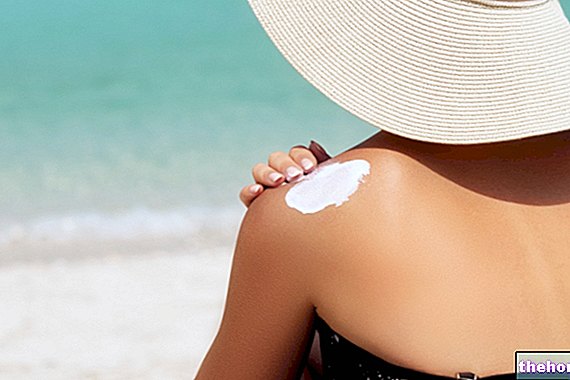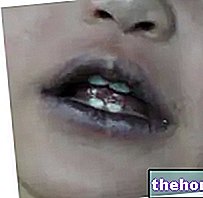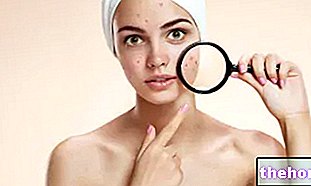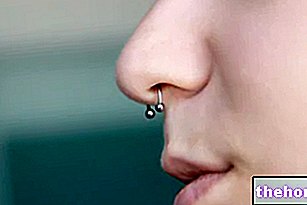Generality
The patereccio is a "superficial or sub-epidermal inflammation that affects the extremities of the fingers or toes.
Usually, this inflammatory process is caused by common pyogens (staphylococci and streptococci) and, sometimes, by Candida albicans.

Bacterial or fungal agents can penetrate tissue through small lesions (splinters, scratches or punctures) and are generally carried with saliva. Once these microorganisms have accessed the tissues, the body's natural defense reaction is to induce a local inflammatory response, which causes symptoms typical of inflammatory processes (redness, swelling, heat and pain). a "bacterial and fungal infection can be added at the same time.
The patereccio must not be considered a trivial disorder: if neglected it can extend to the deep structures of a finger and also cause serious consequences.
Diagnosis is basically based on inspection of the affected area. The treatment consists of an "adequate therapy with antibiotics or antifungals and may include the drainage of any pus.
Types of patereccio
The patereccio is quite common and can affect the superficial or deep structures of a finger.
The inflammatory process is usually acute, but chronic cases also occur.
There are several types of patereccio:
- Superficial patereccio: it can be simply of an erythematous nature or, in the most serious cases, associated with the appearance of an exudate of inflammatory origin that manages to detach the epidermal layers with the production of a flittene (subepidermal vesicle that contains serous or purulent fluid). The superficial patereccio can affect one or more phalanges of a finger and usually evolves within a few hours. In particular, among the different forms it is possible to distinguish the fingertip, an affection that surrounds the ring finger and the paronychia, a type of superficial patereccio located near the nail.
- Subcutaneous patereccio: the inflammatory process spreads to the periungual and subungual tissues with destruction of the horny matter of the nail.
- Deep patereccio: these are the inflammations that manage to reach the bone and osteoarticular structures. If neglected and not treated, the tendon sheaths (tenosynovitis) or a "joint between the two phalanges (arthritis) can easily rise, also producing serious alterations in the functionality of the hand or foot.
Causes
Patereccio is often caused by bacteria that are commonly found on the skin, but that manage to penetrate through skin damaged by even minor trauma such as a scratch or sting. Nail biting, finger sucking, washing dishes, or using irritating chemicals are behaviors that increase the risk of getting an infection.In the nails of the hands this pathology is common in subjects who undergo repeated contact with water, solvents or soaps: humidity allows certain microorganisms to proliferate, such as candida or other bacteria.
Apart from local infection secondary to trauma, chronic patereccio can also originate from a systemic disease such as diabetes mellitus or in subjects with particularly weakened immune systems (patients undergoing organ transplantation or HIV-infected).
Symptoms
For further information: Patereccio Symptoms
Typically, the patereccio starts with pain, swelling, and redness around the base or sides of the nail at the site of the injury, especially if there is a bacterial infection. Acute inflammation can lead to pus-filled blisters (abscesses). . Patereccio caused by bacteria can worsen rapidly, while forms with Candida albicans infection tend to worsen more slowly. Nail alterations can also occur due to the patereccio: they may appear detached, abnormally shaped or have an unusual color.
Diagnosis
Doctors can diagnose patereccio with a simple physical exam, simply by looking at the irritated skin. Usually, no special investigations are necessary, but the doctor may decide to send a sample of liquid or pus to the laboratory to identify which pathogen is causing the infection. The sample thus taken is subjected to culture examination, with an antibiogram to establish subsequently an "adequate antibiotic or antifungal therapy.
Complications
Complications are rare, but they can include:
- Abscess;
- Continuous changes in the shape of the nail;
- Spread of infection to tendons (tenosynovitis), joints (arthritis), bones (osteitis), entire hand or foot (phlegmon), or bloodstream (septicemia).
Rarely, the patereccio can cause permanent damage to the nail. In cases where very intense inflammation is observed, there is a risk that the infection can spread to deeper tissues, to other areas of the body or to the bloodstream (septicemia). In extreme cases of deep infection, the complications of the patereccio can cause painful deformation of the fingers, feet or hands.
You should contact your doctor if:
- Treatment does not help relieve symptoms.
- Symptoms worsen or new signs appear, such as:
- Local spread of symptoms;
- Development of red streaks across the skin, extending from the infected area (for example from the fingers to the wrist)
- Feeling of general malaise;
- Fever;
- Chills;
- Articolar pains;
- Muscular pain.
Treatment
Treatment is generally limited to the removal of the causative agent. In cases of acute patereccio of bacterial etiology, to help reduce swelling and pain (and accelerate the regression of the infectious process) it may be useful to soak the finger in a mixture. consisting of 50% warm water and 50% antibacterial liquid soap, 3-4 times a day for about 15 minutes. The doctor can prescribe antibiotics if the patereccio is caused by bacteria, while he can recommend an antifungal in the case " infection is caused by a fungus. Fungal patereccio can be difficult to get rid of, so be patient and follow your doctor's recommendations consistently.
In severe cases, it is necessary to incise and drain the wound with a sharp instrument: in the presence of a pus-filled abscess, the doctor can numb the area, separate the skin from the base or sides of the nails, and drain the purulent material. During the procedure, it may be necessary to remove a portion of the nail.
In recurring cases of patereccio, it is important to keep the nails dry and protected from harsh chemicals. It may be necessary to wear gloves or use a cream that protects the skin from moisture. In addition, the application of a topical steroid cream or a solution of ethanol (alcohol) and thymol (fungicide) may be indicated. If the infection doesn't clear up, be sure to tell your doctor.
See also: Medicines for the Care of the Patereccio »




























